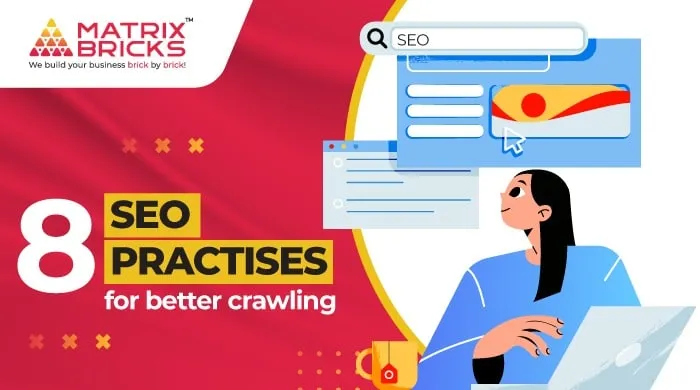
So you have a business set up and a website that’s up and raring to go, but you just don’t know what comes next. It’s likely that have heard the term SEO floating around, but you don’t know what it’s about or how to use it.
Well, we are about to tell you just that.
SEO, Search Engine Optimisation is the practice of optimizing your web pages to make them reach a high rank in the search results of Google and other search engines so that you attract and retain the right kind of crowd and business blooms.
1. Publish great content and write unique titles, descriptions, and content
If SEO practices are the ‘how’ of how your clients reach your website (and how it fares on the search engines), then good content forms the ‘what’ of what retains these clients to stay on your website.
Content that’s helpful and original, has been observed to be fruitful in getting ranked higher on Google. In fact, the search engine itself advises against using duplicate or near-duplicate versions of your content across your site. This is where investing in good content marketing providers like Matrix Bricks, which is one of the best SEO companies in India; amongst other things; pays off! (plug? no. marketing? yes!)
This rule of keeping things original applies to just about every piece of content on your website from E-commerce product pages, to Landing pages, and Image alt text, as well as Category pages, and Meta description tags.
Curating content that is 100% original might be difficult, but worth it considering how Google is able to pick up on plagiarised or “inspired” content and give your website a lower rank in the search results.
A way out of being unable to come up with new content for each page is by combining pages that have similar content together or using Canonical URLs.
2. Add Your Main Keyword Early On
Before we give you the low down on how to use keywords, let’s understand what keywords are.
Keywords are simply ‘key’ terms derived from your content copy and added online in order to improve search engine rankings for those terms.
One of the best ways to get picked up in Google rankings is by placing the main keywords early on in the content copy! For example, if your article talks about ‘The best ways to take care of your pets during the monsoon’, then your first paragraph, or ideally, the opening line itself should contain the keywords of the title. In the case of our article, it would be something like the following-
The best way to take care of our pets during the monsoons is by knowing that our pets require special care during the season!
OR
The rains have finally arrived and as much as we humans love (or hate it), it calls for our special attention to learn about the best ways to take care of our pets during the monsoon.
Another good habit is ingesting these keywords as frequently as possible on the page later on. This too helps in getting the page noticed by the search engines.
Optimize Your Site’s Loading Speed
Site loading speed is key to not just a good user experience but also helps in getting your SERPs (what the search engine returns after a user submit a search query) ranked high by Google.
Simply put, the fast loading speed of your website makes Google list your site first, over others, when asked for a particular query.
The first thing to get down is finding the speed of your website, which can be done through free tools like PageSpeed Insights (by Google itself), Pingdom, and GTmetrix. You’ll get detailed reports on what’s slowing the speed of your website and will be able to make the needful changes.
Some additional ways of speeding up the website are compressing images, using lightweight themes, using lazy loading, getting a CDN (Content Delivery System) in place, and enabling browser caching.
4. Track Your Results With The Google Search Console
By now you’ve understood the importance of ranking high in SERPs, now we’re going to introduce you to another valuable service by Google, called the Google Search Console, which lets you know how your site is doing in the SERPs.
The Google Search Console has a lot of cool tools and features that you access by simply verifying your site ownership. Here’s a guide to help you get started.
Another way of ensuring your site sails smoothly is by performing SEO site audits. You can do this by employing software like Moz, and platforms like Semrush and Ahrefs.
5. Image optimization for SEO
According to Google, Image SEO helps in ranking for Google Images and Google Web Search!
This makes it all the more important to get your image optimized for SEO. And just how do you do that? Read on-
Firstly, you need to name images using descriptive file names. That is, to name the logo of an XYZ brand as logo_of_xyz_brand.jpg, over naming it image38.jpg which is random and vague. This is because Google can’t see images and needs you to let it know what the image is about.
It’s also wise to use alt text for the images as Google says it relies on them majorly to understand images. Alt-text is used within an HTML code to describe the appearance and function of an image on a page.
Typically, the best practice for alt text is to keep it descriptive with sufficient use of the main keywords that you’re targeting. At the same time, make sure you’re not stuffing it with keywords.
6. Use Internal Linking
An internal link is just a hyperlink that points to another page on the same website. It’s an easy practice for SEO optimization that you can get the most out of by one, using descriptive keywords in the anchor text, which helps Google understand what each page is about.
And two, by sending authority to pages on your website that need It: A good practice, is to internally link to pages that don’t have much link authority. Doing so increases said authority and voila– its Google ranking gets boosted!
7. Build Backlinks To Your Website
Backlinks are links from one page on one website to another. If someone links to your site, then you have a backlink from them. If you link to another website, then they have a backlink from you.
(insert Spider-Man meme?)
Why are these important for SEO?
Because they draw traffic from another website and make relevant people in your industry essentially, vouch for you (pretty cool right?). It represents a “vote of confidence” from one site to another, a kind of promotion if you will. When a website earns additional backlinks, search engines infer that the website possesses valuable content worth ranking well on the SERPs.
8. Improve Your Site’s User Experience
Improving your site’s user experience (UX) is said to be, directly and indirectly, helpful for your SEO. When people don’t find what they are looking for, they bounce off of your page. You can get a proxy measurement of this ‘Pogo sticking’ from Google Analytics, which helps you re-design and re-curate information.
UX can indirectly help with SEO because people are more likely to share and link to user-friendly, mobile-friendly sites.
You can use any of the following free tools to check for said parameters:
- Google’s Mobile-Friendly Test
- GTMetrix
To sum it up, if your site is hard to use, uses intrusive popups and ads, and has a bunch of broken links then people aren’t going to link to it, even when you have great content (yikes)
So what do you do instead?
You begin with the SEO optimization practices listed above and see how it boosts not just your SEO but also, your business. These practices are meant for individuals with small businesses, as well as big companies trying to up their SEO game. SEO optimization relents to every educated user, and we can’t wait for your business to take off.





